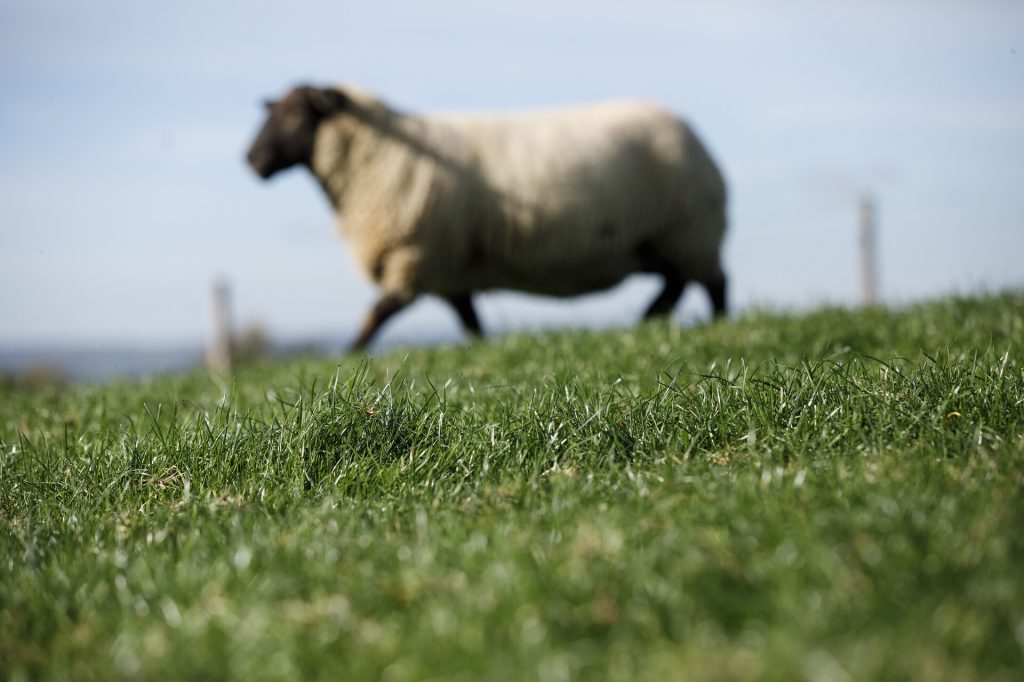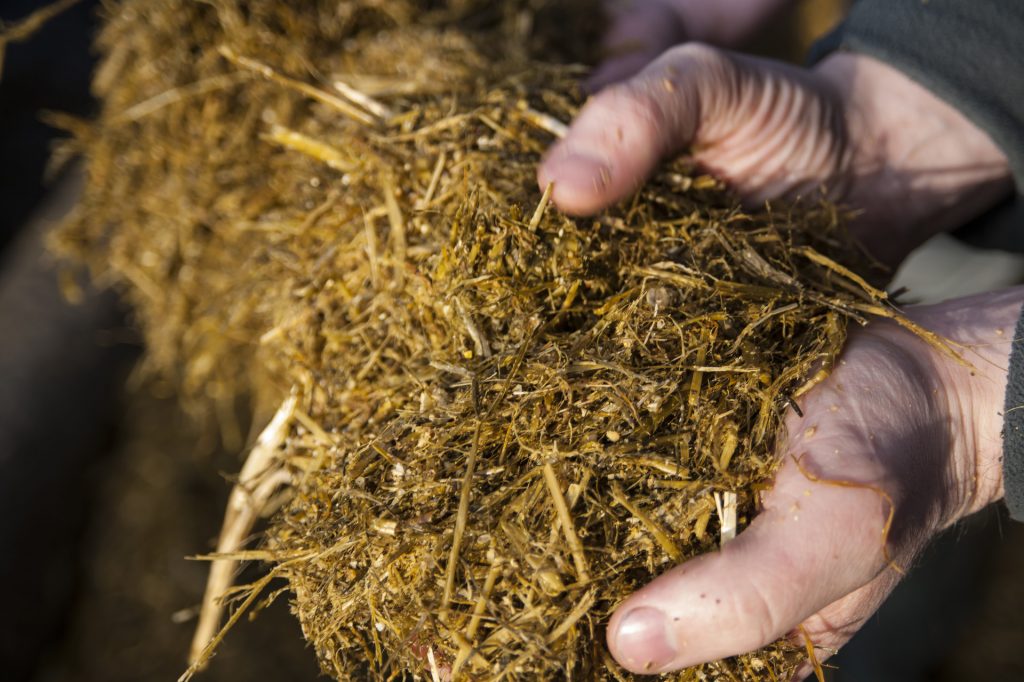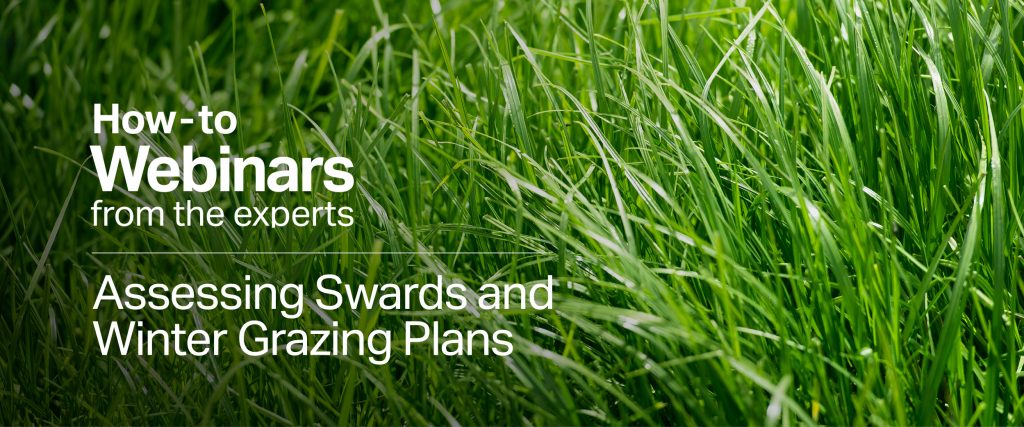Managing grass well over winter
October is a time of year to be thinking about making the best of forage even though silage is made and clamped by now and it is too late for autumn reseeding. It’s time to consider how well you are set up for winter.
The way grass is managed over the winter can have a big impact on how fields perform next spring. This year’s warm weather has led to significant grass growth in recent weeks.
Combined with the wet weather, this means many farms are carrying higher grass covers than ideal, particularly when most are thinking about housing stock due to the wet conditions. The warm wet weather has also resulted in higher than average foliar disease in grasses, particularly crown rust.
Reducing covers to protect yield and quality in spring
Reducing grass cover now can be achieved by grazing livestock, such as heifers or sheep. You may find sheep less available this year with the high price of store lambs, and the uncertainty around Brexit and potential impact on lamb prices early next year, but sheep can take grass down effectively. Heifers are a possible alternative, though, being lighter than dry cows.
Given the current levels of disease, it is more important than normal that grass covers are reduced going into the winter to prevent problems with yield and quality in the spring. The cover you need now is based on knowing what you’ll need next spring.
For farmers looking for an early turnout this is about 2,500 kg DM/ha at the start of February. If your growth rate over the 90 days of winter is 3 kg DM/ha per day, you need to close up with an average farm cover of around 2,200 kg DM/ha. As a rough guide the grass will be about 10cm high.
If you’re unable to remove excess grass now, assess the sward in early Spring. Where there is significant dead and decaying material remove the grass as soon as possible, by harrowing or grazing. This allows high-quality fresh grass to re-grow for first cut silage or quality grazing.

What’s in your clamp?
With the forage growing season ending, it is a great time of year to take stock. To understand what is already ensiled for the winter ahead, to consider how crops have performed this year and to think about changes you might make to forage cropping for 2021.
A great place to start is understanding and making the best of what’s already in the clamp and looking after it.
Analysing silage monthly to keep track of nutritional quality
If you haven’t already done so, take core samples for silage analysis before the clamp is opened then take face samples throughout the winter to keep track of what’s being fed. Sampling every 30 days is a good rule of thumb.
If you feed maize silage, starch degradability tends to improve with time in the clamp, so regular analysis can help drive more accurate rationing. Speak to your nutritionist or the lab doing the test for help interpreting the analysis.
Maintaining forage quality at feed-out
Good forage quality comes from having high quality grass in the first place and ensuring good consolidation and sheeting down when silage is made. But these simple measures at feed-out helps maintain that quality throughout winter:
- Aim to roll the sheet back as little as possible at a time. Silage keeps best if air is kept out of the clamp. Only unroll the top sheet for the silage you need that day or no more than enough for 2-3 days at a time.
- Try to maintain a neat silage face. A sharp specialist block cutter or shear grab can help, aiming for minimum surface disruption. Avoid using a tined grab or a bucket as they let air into the face encouraging heating and spoilage. This is particularly important for higher DM forages. Being more difficult to consolidate well, the spoil more easily.
- Strive for consistency by adapting your ration based on silage analysis. Make sure mixer wagons are serviced and the mix is consistent throughout.

Is there enough silage in the clamp?
Now is a good time to check you have enough silage in store and decide if you need additional feed to supplement forage stocks. Estimate the total tonnage available by measuring your silage clamp (length x width x height) to calculate total cubic metres. Typically, grass silage is around 600 kg/m3, whereas maize silage is around 700 kg. This is fresh weight, but your silage analysis gives you a dry matter percentage to calculate your overall dry matter availability.
Planning ahead for next year
When you receive your silage analysis results, think about your forage quality and yield. Is this year’s silage what you hoped for? What are the D value and ME levels?
ME represents the energy value of the silage, and ideally you want to see grass silages with ME above 11 and a D value over 70. A higher D value translates into better livestock performance. You can only work with what you have for this winter, but are there things you could change for next year?
What are the reasons for any disappointing silage results? Is it the weather conditions or stage of cutting at harvest, or more fundamental challenges with the fields or crop?
Think about doing seasonal soil sampling to understand crop needs for the spring and plan how you buy fertiliser for the year ahead. Do some fields have a high weed burden? Is soil compaction an issue? Do any fields need sward improvement, either through overseeding in the spring or a complete reseed?
Short-term improvements to a sward can be achieved through over-seeding but a full reseed is the best method for improving a ley. If any fields produced disappointing yield or quality this year, have not re-grown as quickly as you’d hoped, or have a high weed burden, consider a spring reseed to improve productivity and forage quality.
To find a complete guide to autumn sward assessment and how to identify particular issues, please use the link below.

